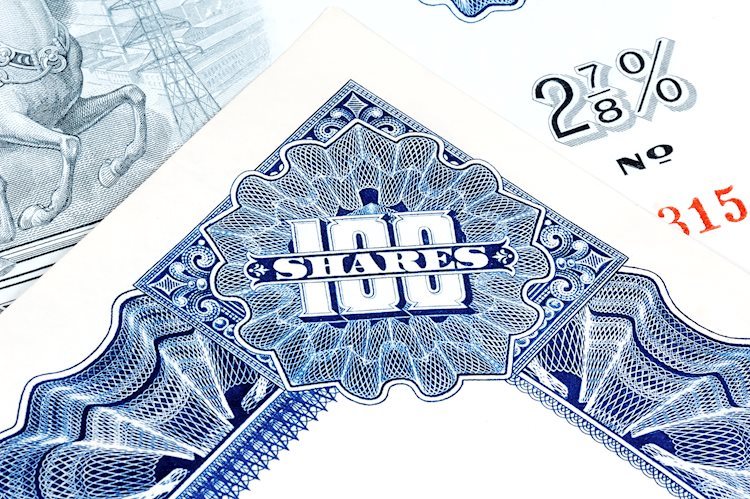In today’s financial market, technology stocks have become an increasingly popular investment choice. One of the leading tech companies that investors pay close attention to is Alphabet Inc., the parent company of Google. Alphabet Inc.’s Class A common stock is traded on the NASDAQ exchange under the ticker symbol GOOGL. As we analyze the GOOGL stock chart, it is essential to understand its performance both from a historical perspective and how this performance ties into the company’s overall financial situation, industry conditions, and future prospects.
To begin with, it is important to discuss the company’s organizational structure to properly situate GOOGL within the broader Alphabet Inc. portfolio. Alphabet Inc. was established as a holding company on October 2, 2015, to provide a more efficient structure for Google and its subsidiaries. Under this umbrella, Google’s internet-based services such as search, advertising, maps, apps, YouTube, and Android remain integrated, while other divisions of the company, such as the Life Sciences division, the X Lab for innovation, or the Calico research project (among others), operate more autonomously.
In terms of pricing structure, GOOGL, the Class A common stock, is aimed at regular, retail investors, while Class B stocks are mostly held by Google’s founders Larry Page, Sergey Brin, and former CEO Eric Schmidt, giving them significant control over company decisions. Class C stocks, with the symbol GOOG, although without any voting rights, emerged from a stock split in 2014.
Now, with a better understanding of the company and the role of GOOGL within it, it’s time to examine the stock’s historical performance. Since Alphabet Inc.’s establishment in 2015, GOOGL’s shares have shown an upward trajectory, although with some volatility in their value. Market forces, general economic trends, and company-specific events such as product releases, financial news, and general public perception have all contributed to the fluctuation in stock price.
For example, the COVID-19 pandemic had a profound impact on the global economy, including the stock market. Despite this turmoil, GOOGL managed to weather the storm relatively well, with its stock price rebounding quickly and continuing its upward trend. In fact, the pandemic even accelerated some of the shifts that benefited the company, such as the increased reliance on online services and e-commerce. This demonstrated the resilience and adaptability of Alphabet Inc. during challenging market conditions.
To gain a more comprehensive evaluation of the GOOGL stock, it is necessary to consider various financial indicators for the company. One such indicator is the price-to-earnings (P/E) ratio, which compares the stock price to the company’s earnings per share. This ratio can be used to gauge whether a stock is overvalued or undervalued relative to its industry peers. In alphabetical order, GOOGL’s P/E ratio is generally in line with other large-cap tech companies such as Apple (AAPL), Amazon (AMZN), and Microsoft (MSFT).
Additionally, investors frequently evaluate a company’s financial health by analyzing its earnings reports, which detail the company’s revenues, expenses, and overall profitability for a given reporting period. Alphabet Inc. has consistently reported strong earnings, further validating the company’s status as a major player in the technology industry. Recently, the company’s advertising and cloud businesses have seen significant growth, contributing to increased revenues and indicating a promising trajectory for Alphabet’s future.
Another key financial performance indicator is the dividend yield, which measures the annual dividend payment as a percentage of the stock’s market price. As of now, Alphabet Inc. has not paid dividends to its shareholders, instead opting to reinvest its profits into the company’s growth and development. This decision demonstrates Alphabet’s commitment to driving innovation and enhancing shareholder value in the long term.
Beyond the financial metrics, it is crucial to recognize the impact that public sentiment, regulation, and other external factors can have on GOOGL’s stock performance. For example, increasing scrutiny over data privacy and antitrust concerns could potentially lead to new regulations, which may affect the company’s operations and stock value. Conversely, positive developments in the areas of artificial intelligence, cloud computing, or investments in new ventures can have a favorable impact on the stock price.
In conclusion, Alphabet Inc. Class A’s stock, traded on the NASDAQ exchange under the ticker GOOGL, has exhibited a solid overall performance since its inception in 2015. When analyzing the stock’s historical trajectory, financial metrics, and the context provided by industry conditions and external factors, it is clear that Alphabet Inc. represents a considerable player in the technology market. Investors should take all these elements into account when making investment decisions about GOOGL or any other stock.


